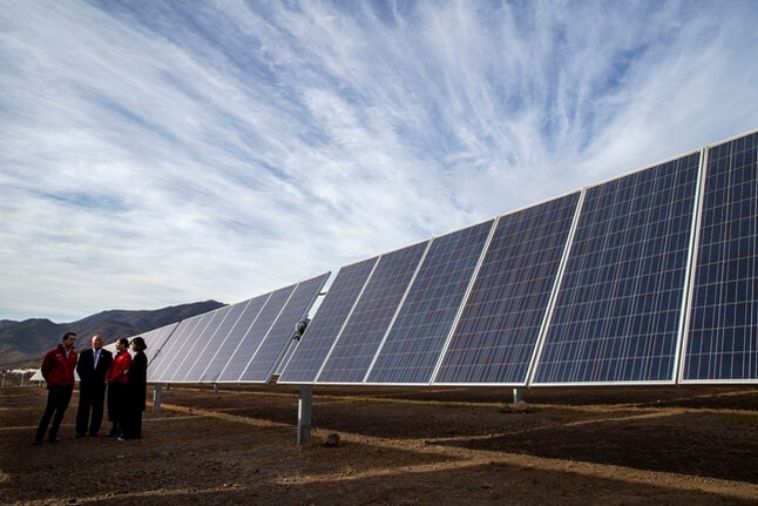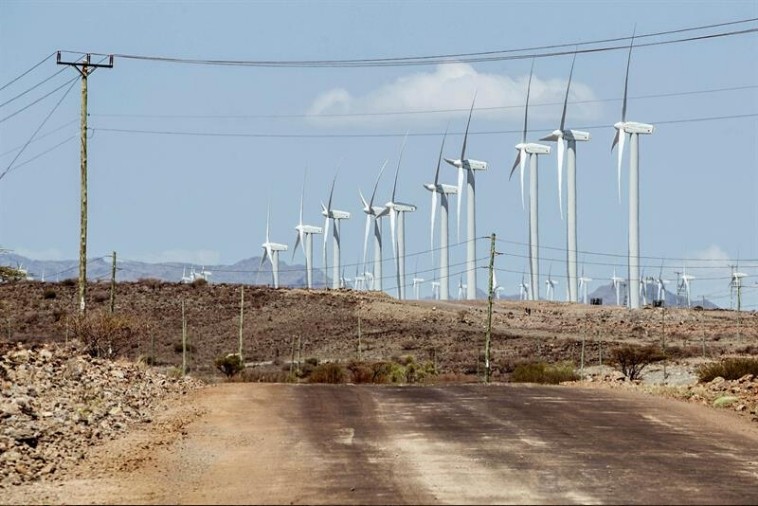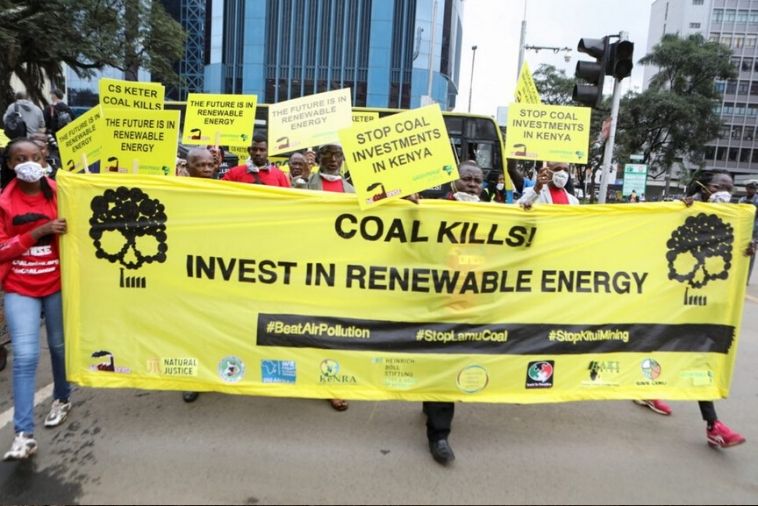There is a trope among politicians on the right that wind and solar power are too expensive, that it would be a fool’s errand to pursue renewable energy sources because they could never be cheaper than the fossil fuels we’re burning. No one is more fond of rolling out this trope than Donald Trump, who has repeatedly said things like, “Solar is very, very expensive. Wind is very, very expensive, and it only works when it’s windy.” Turns out, that just isn’t the case.
Solar and wind power have gotten so affordable that, according to a recent report from Bloomberg, they are surviving on their own without the need for subsidies.
For years, governments across the world have subsidized the cost of building solar and wind farms in an attempt to entice companies to embrace the technology while it was new and still expensive. Essentially, these incentives existed to make the technology financially feasible, which helped to increase demand for it and, in turn, brought the actual price down. That strategy has been quite effective. As wind and solar plants have become more popular and the equipment needed to build them more effective and available, the price has come down. The cost of wind power has dropped by 50 percent since 2010, and solar is down by a whopping 85 percent during the same time period. A 2018 study conducted by the Massachusetts Institute of Technology found that government policies designed to help lower the cost of solar power in particular also helped to increase the scale of production, which resulted in a 99 percent drop in the cost of production over the last four decades. These developments have made both options cheaper than setting up new coal or gas plants in about two-thirds of the world, per Bloomberg.

We’ve been creeping toward this development for awhile, even if Trump’s talking points haven’t caught up to it. Michael Milken, chairman of think tank Milken Institute, told CNBC earlier this year that the argument for clean energy “isn’t just an argument of environment, it’s now just pure economics,” because the price has come down so quickly. Bloomberg New Energy Finance predicted that solar panels and wind turbines will continue to drop in cost by another third by 2030. The organization believes that solar electricity will be 63 percent cheaper than it is today by 2050 and wind will drop another 48 percent by midway through the century. Even if the technology doesn’t reach those targets, the fact is that renewable energy sources will — and in many cases, already are — cheaper on their own than coal and natural gas. That could lead to a huge uptick in adoption, and Bloomberg’s analysis believes as much as 22 percent of all energy production in 2050 will come from solar.
The irony of Trump and other Republicans claiming that wind and solar can’t exist without subsidies is that, by all accounts, they are now propping up the dying coal industry rather than allow the free market run its course. Trump came into office promising to increase drilling for natural gas and mining for coal, and repeatedly claimed he would single-handedly save the coal industry. He hasn’t, of course. Cecil Roberts, the president of United Mine Workers of America, said earlier this month that, “Coal’s not back. Nobody saved the coal industry.”

The numbers back that up. According to the administration’s own data, only about 2,000 new coal mining jobs have been created since Trump took office — a number that isn’t considered to be statistically significant to the industry. But, just because the industry isn’t booming doesn’t mean that it isn’t being artificially propped up. The current administration has gone out of its way to roll back just about every regulatory restriction on the book that was supposedly “holding back” coal mining by doing things like establishing safety standards and limiting waste run off. The president’s administration no longer requires companies to report methane emissions, has partially repealed a law that limited the amount of methane emissions allowed on public lands, and loosened a rule that restricted the amount of toxic emissions allowed from industrial polluters. Mine owners are no longer required to prove that they can pay for clean up and any future pollution caused by their operation.
And yet, coal mining and coal-powered plants continue to march toward a slow death. That is because they aren’t anywhere near as affordable or efficient as the alternatives — including wind and solar. (Also, despite the president’s repeated claims otherwise, there is also no such thing as “clean coal.”) A report published this year by renewables analysis firm Energy Innovation found that 75 percent of the coal power plants operating in the United States generate electricity that is more expensive than wind and solar. The analysis estimates that by 2025, solar and wind power will be cheap enough that it could, in theory, replace 86 percent of coal power and result in much cheaper electricity across the country. This April marked the first time on record that renewables were responsible for generating more power in the U.S. than coal, and that trend is only likely to continue, even as subsidies are falling away.
This shift is already being made in other major markets around the world. According to Bloomberg, Spain has ditched most of the incentives it once offered to encourage adoption of solar power. The result: solar power is, all on its own, the cheapest way to generate electricity in the country. Likewise, China has seen adoption of renewables increase across the country despite limited benefits for building wind and solar plants. They just are cheaper.

Renewables still make up a very small portion of our overall energy production, though. According to Bloomberg, wind and solar accounted for just seven percent of the total electricity generated worldwide in 2018. In the U.S., that figure is closer to 17 percent, with hydroelectric and wind power dominating. However, solar power is quickly growing as it has become more affordable and efficient. Adoption of these technologies needs to pick up — and fast. Electricity generation from fossil fuel plants like coal and natural gas are responsible for 28 percent of human greenhouse gas production. A move to renewables would put a sizable dent in the amount of harmful emissions that we put into the atmosphere and is an important step toward combating climate change — a battle that we are running out of time to address.
Trump and other Republicans are welcome to pretend like wind and solar aren’t viable energy sources. There’s plenty of motivation for them to do so — look no further than the fact that Trump publicly called on the Tennessee Valley Authority to save a coal plant set to be shut down for being inefficient and too expensive to operate. Why? Because the primary coal supplier for the plant is a mining operation run by a major Trump donor. The motivation of Trump and his cohort to save coal and other fossil fuels is driven by personal profit and benefit, not by cost and economics. Solar and wind are winning all on their own. It is Trump and the Republicans who are trying to thwart the free market, no matter what they want to claim.
The original article can be found here:
https://www.mic.com/p/solar-wind-energy-are-now-both-cheaper-more-sustainable-than-coal-18788263